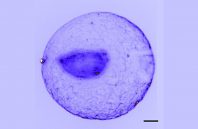The technique of light-sheet fluorescence microscopy (LSFM) can rapidly provide stunning, 3-D images of intact organs and small organisms, such as zebrafish and mouse brains. But to get those images, the samples usually need to be immobilized in a stiff gel—a demand that can limit the technique’s use in some studies of biological dynamics and in aspects of drug discovery.
Now, a research team led by OSA Fellow Kishan Dholakia of the University of St. Andrews, U.K., has devised a way to marry LSFM with a different technique for holding the specimen in place: a contact-free ultrasound trap (Nat. Commun., doi: 10.1038/s41467-019-08514-5). And the researchers demonstrated the usefulness of the approach by using the LSFM–ultrasound combination to measure the effect of specific drugs on the heartbeat of zebrafish larvae suspended in the trap.

 (585) 768-2513
(585) 768-2513

